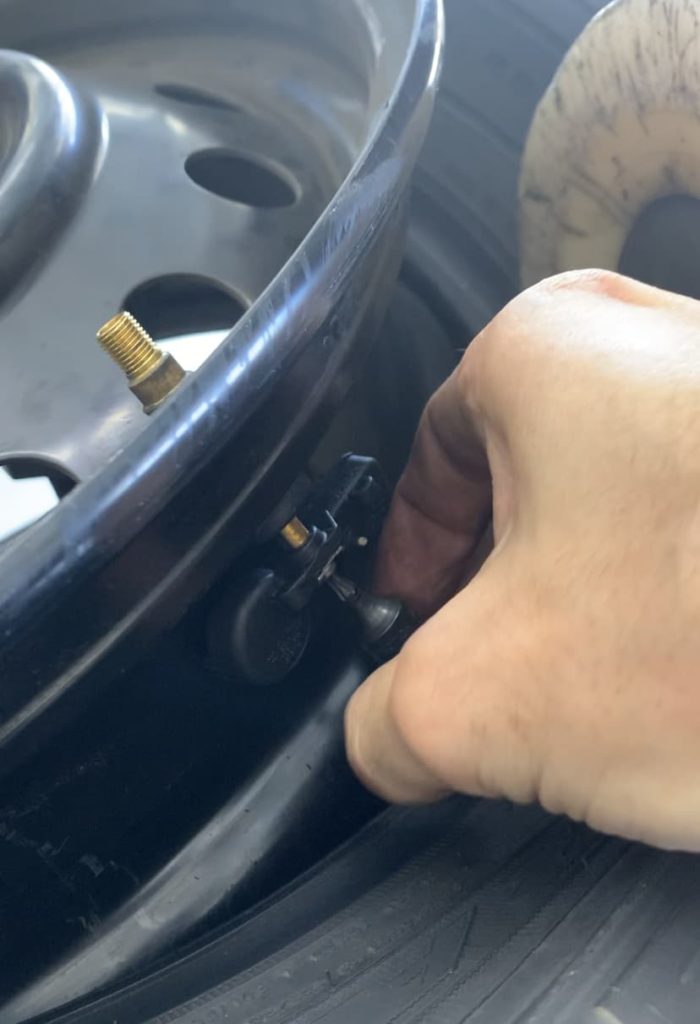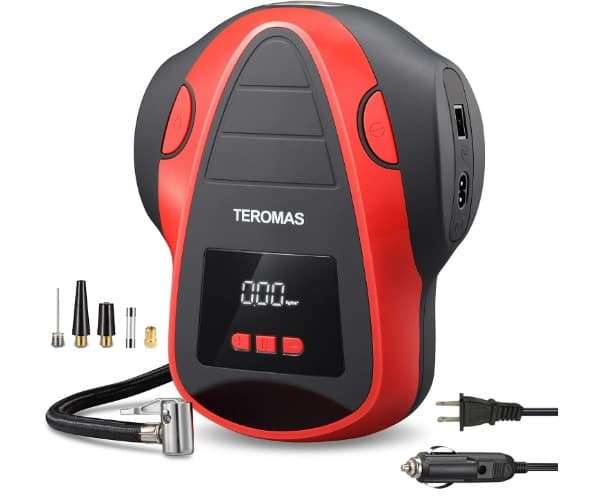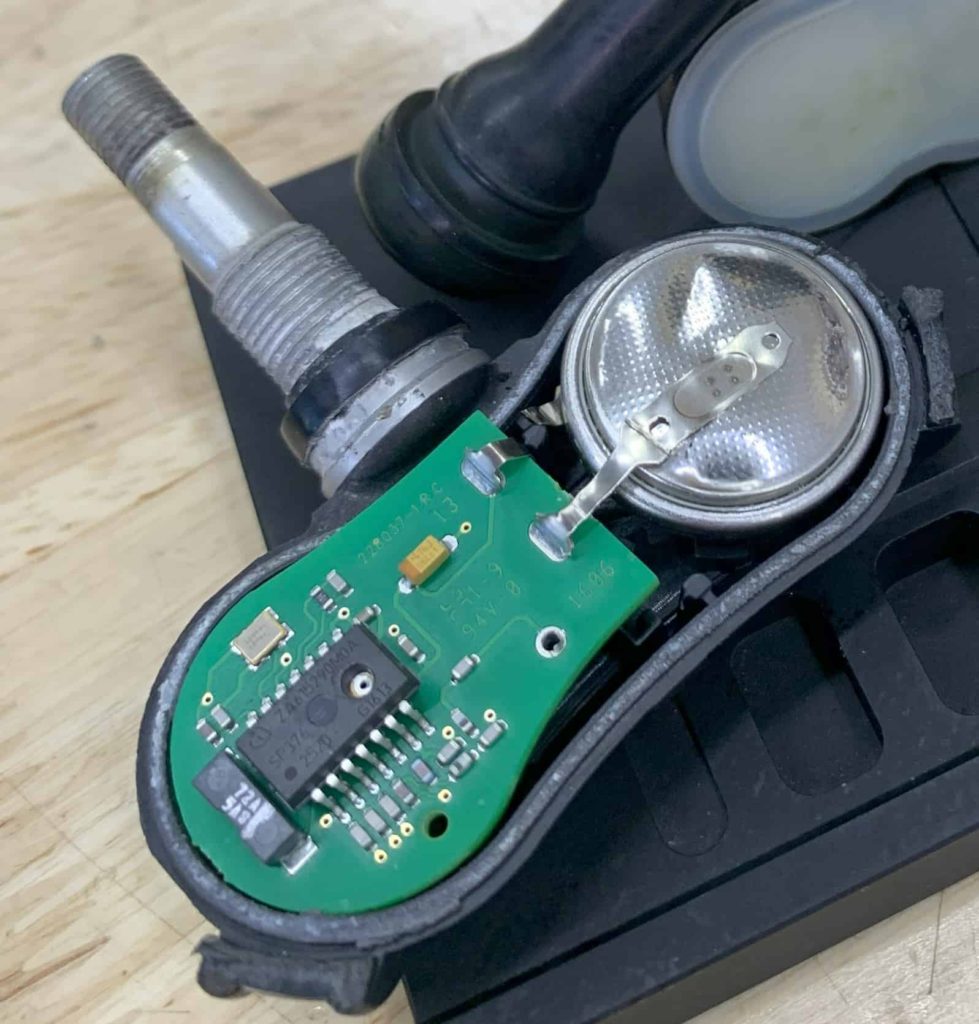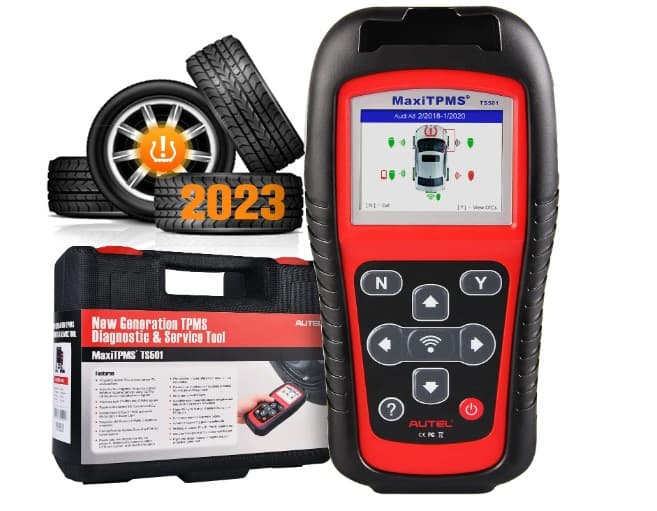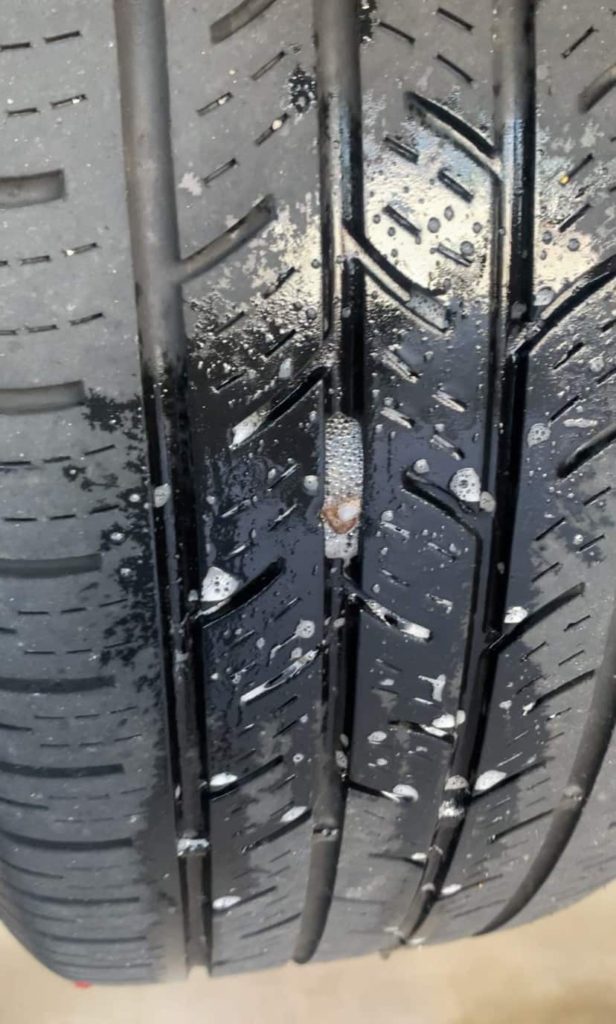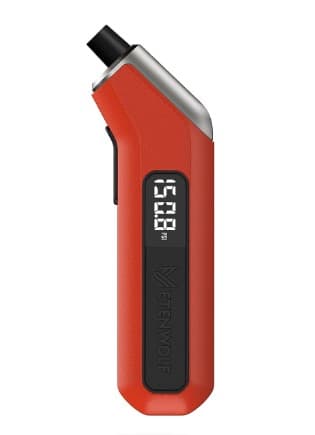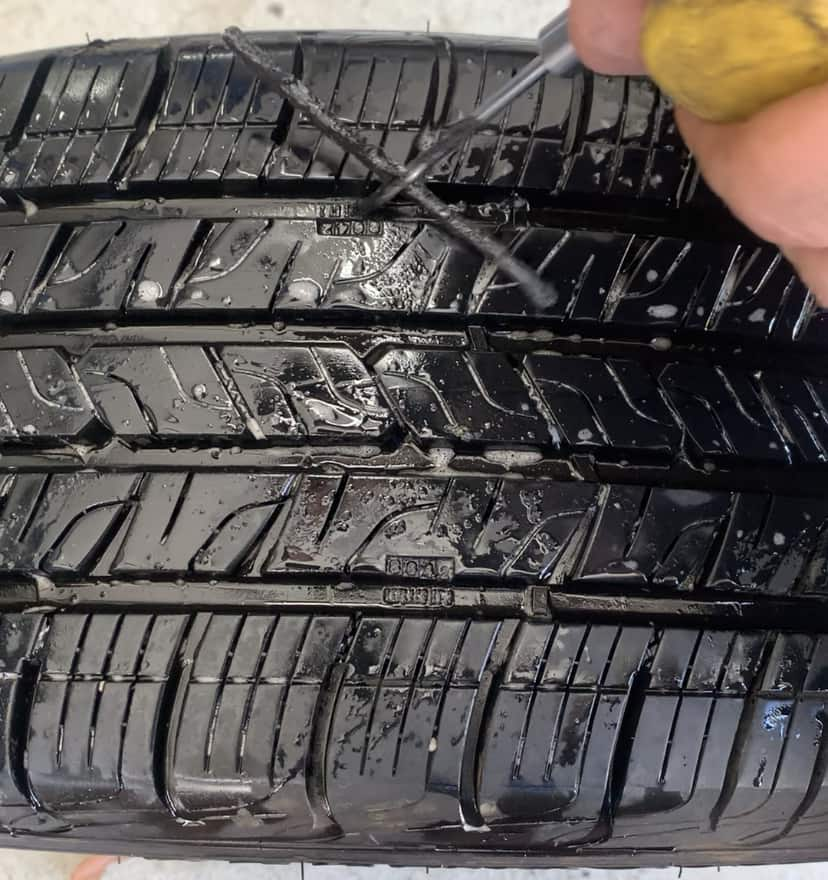Understanding the Ford Mustang's TPMS
The Tire Pressure Monitoring System (TPMS) in the Ford Mustang consists of three key elements that collaborate to notify the driver if the tires require attention. These components include tire pressure sensors, a dedicated TPMS receiver module, and the vehicle’s central computer, commonly referred to as the ECU or ECM.
How Does the Ford Mustang TPMS Work?
Pressure and Temperature Sensors: Embedded on each tire’s valve stem base, these sensors activate to gauge both tire pressure and temperature when the vehicle surpasses 20 mph. Each one is contained within a miniature plastic shell and includes its own circuit board, powered by a battery-operated transmitter.
Wireless Information Transmission: When the Mustang is driven or upon a change in tire pressure status, the sensors transmit data wirelessly. The information is sent over 315 MHz or 433 MHz frequencies via Radio Frequency (RF) signals.
TPMS Data Receiver: An auxiliary microcomputer or circuit board located in the Mustang captures the wireless signals that the sensors emit. This unit then channels the compiled data to the ECU for more detailed examination.
Central Processing Unit of the Ford Mustang (ECU): The Electronic Control Unit (ECU) is the Mustang’s main analytic hub/computer. It inspects the incoming data concerning tire conditions and compares it with Ford’s built-in criteria. A low tire pressure warning is initiated if the levels drop 15-20% below the recommended range.
ECU-triggered Dashboard Notifications: A yellow exclamation mark warning light is activated on the dashboard if the ECU determines that tire pressure has descended below the advised safety levels.
How to Reset the Ford Mustang Tire Light
Park the Ford Mustang on a flat surface.
Inspect and modify the tire pressure for all four tires while they’re cold, setting them to the specific recommended pressure levels.
Drive the Ford Mustang for a minimum of a few minutes, ensuring to exceed 20 mph.
How to Retrain the Ford Mustang Tire Pressure Sensors
After rotating the tires, replacing them, or performing any kind of tire service or repair, it’s essential to re-train the tire pressure sensors. This step ensures that the Ford Mustang’s ECU can accurately identify the position of each wheel when relaying sensor information.
Shut off the Engine: Switch the Ranger’s ignition to its OFF state.
Power On: Double-push the start button without putting your foot on the brake, or rotate the key to its ACC position. This will supply electrical power while keeping the engine off.
Activate Hazard Signals: Toggle the hazard lights on and off three times, amounting to six button presses in total. On-Off, On-Off, On-Off.
Reset Configuration: Upon successfully completing steps 1-3, you should hear a single horn beep and see a notification on the screen that you’ve accessed “RESET MODE.”
Front Left Wheel: Exit the vehicle and remove the valve cap on the front left tire (driver side front).
Release Air from Front Left: Depress the valve core to allow air to escape the tire until a horn beep signifies that the wheel’s location is known.
Front Right Wheel: Approach the front right tire (passenger side front tire) and remove its valve cap. Begin releasing air until the horn beeps.
Rear Right Wheel: Proceed to the rear right tire (passenger side rear tire), uncap the valve, and let air out until the horn sounds.
Rear Left Wheel: Finally, head to the rear left tire, take off the valve cap, and let out air until you hear the horn.
Successful Training Confirmation: If all steps are executed correctly, a message stating “Training Complete” will appear on the display screen.
Power Off: Turn all power to the Ford Mustang Off.
Inflate Tires: Reinflate all tires to the recommended pressure levels.
Test Drive: Drive the Mustang for several minutes, making sure to go faster than 20 mph.
Ford Mustang Tire Sensor Retraining Tips
🔎If you don’t hear a horn beep after finishing step 3, begin the process again. (Power cycle a couple of times, drive the car, and then attempt the procedure again.)
🔎 It’s crucial to strictly follow the steps in the correct order when following the Mustang sensor retraining process.
🔎 If a double horn beep is audible when you switch off the ignition, restart the entire process.
Ford Mustang Tire Pressures and Wheel Size
TIRE SIZE | FRONT PSI | REAR PSI |
235/55R17 | 32 | 32 |
235/50R18 | 32 | 32 |
255/40R19 | 32 | 32 |
Different Ford Mustang Tire Pressure Warning Messages
"TIRE PRESSURE LOW"
This notification is a sign that one or more tires are not sufficiently inflated and should be filled to the advised pressure levels.
"TIRE PRESSURE MONITOR FAULT"
This alert indicates that a fault or anomaly exists within the tire pressure monitoring system itself, resulting in the blinking yellow exclamation mark.
"TIRE PRESSURE SENSOR FAULT"
This notification implies that one or multiple tire pressure sensors are struggling to connect with the TPMS receiver unit.
What Triggers the Low Tire Pressure Light in a Ford Mustang?
Tires with insufficient air pressure
Overblown tires
Tires experiencing air leakage
Sensor absence in the wheel (like when a spare is deployed)
TPMS sensor battery nearing end-of-life or defective
Damaged TPMS receiving module or ECU
Interference from adjacent electronics or Ford vehicles
Shifts in weather or elevation levels
Exceeding vehicle weight capacity
Employment of tire chains
Thick window tint
Battery Life in the Ford Mustang Tire Pressure Sensors
Tire pressure sensors are essentially a small circuit board with a transmitter connected to a small battery. Each Ford Mustang wheel has its own dedicated tire pressure sensor that operates on a silver-oxide battery (excluding the spare tire, which lacks this feature). Inside a plastic enclosure, an electronic circuit board is directly wired to the battery. The construction of the sensor means that you can’t merely replace or recharge its battery when it runs low; instead, you’ll need to exchange the entire sensor unit and its associated valve stem. On average, these Ford-manufactured tire pressure sensors endure for 5 to 10 years, or close to about 100,000 miles.
Troubleshooting the Ford Mustang Tire Light Problems
At times, executing the tire pressure reset or retraining steps for the Ford Mustang doesn’t result in extinguishing the tire light. If the tire indicator stays illuminated, it’s essential to diagnose the underlying issue. Below are six potential causes and corresponding fixes to assist you in resolving your tire light concerns.
SOLUTION 1: Is Any Tire Experiencing a Loss of Air Pressure?
When the low tire pressure indicator illuminates, your first action should be to determine whether any of your tires are leaking air. Inspect each wheel and tire on your Mustang by walking around the vehicle. Then, carry out these three steps:
Don’t solely rely on the integrated tire pressure monitoring system; instead, manually gauge the air pressure in every tire to identify which one is lacking sufficient air.
Utilize either a portable tire inflator or one available at a gas station to adjust the tire pressures. Double-check the pressure levels post-inflation to ensure accuracy.
Drive the Ford Mustang at speeds exceeding 20 mph for a brief period.
ANSWER: If the low tire pressure light extinguishes after you’ve filled the tires and taken a short drive but come back on later—whether it’s a matter of seconds, minutes, or days—you can be nearly certain that the implicated tire or wheel has a leak. To pinpoint the precise location of the leak on either the wheel or the tire, consult solution 6 below.
SOLUTION 2: Clearing Diagnostic Trouble Codes from the Ford Mustang ECU
The computer system in the Ford Mustang is known as the ECU or ECM. This system logs every data point generated by the Mustang’s sensors, including information from the tire pressure monitors. If the sensor readings deviate from the pre-established benchmarks set in the computer, the ECM activates a diagnostic trouble code (DTC) to alert the driver of an issue. These DTCs manifest as either a check engine light or, in this context, a low tire pressure warning light. The ECM stores each DTC in memory, with some being permanent and others temporary. Similar to rebooting your laptop when it freezes, you can reset your Ford Mustang:
Adjust your tire pressures to their recommended cold pressure levels.
Ensure the engine and all electronic components (like the radio and lights) are switched off.
Detach the negative cable from the primary 12-volt battery.
Pause for a moment.
Reattach the negative battery cable.
Take your Mustang on a 30-minute drive at a speed of 50 mph.
ANSWER: If following these steps extinguishes the tire pressure light but it reilluminates later, it indicates that either you have a leaky tire or one or more of your tire pressure sensors may be defective or have a low battery. To identify the malfunctioning tire sensor, refer to solution 3.
SOLUTION 3: Diagnosing Tire Pressure Sensors With a TPMS Tool
If you’ve gone through solutions 1 & 2 and suspect that a tire pressure sensor may be malfunctioning, a TPMS diagnostic tool is essential for further investigation. I’ve had a positive experience using Autel TPMS diagnostic tools over the years and highly recommend them. To pinpoint which sensors might be faulty, proceed with the following steps:
Connect the TPMS diagnostic tool to the OBD2 port in your Ford Mustang.
Position the TPMS tool directly in front of the valve stem on the front driver’s side wheel and press the “Trigger” or “Test” button on the device.
Pause for a few moments to allow the tool to give its response.
Repeat this process for the remaining tires as directed by the tool’s instructions.
ANSWER: After carrying out the test on all the tire pressure sensors, the TPMS diagnostic tool will offer a detailed report on each sensor’s condition. If the tool is unable to establish communication with a particular sensor or reports that the sensor’s battery is low or entirely depleted, you’ll need to replace that sensor with a new one.
SOLUTION 4: Reviving an Inactive Sensor
Sometimes, a tire pressure sensor in the Ford Mustang may become unresponsive or go dormant. To attempt reactivation of the TPMS sensor, you can:
Identify the tire with the problematic pressure sensor and deflate it.
Depress the valve stem core to release approximately 15-20 Psi.
Refill the tire to its advised pressure level plus an extra 5 Psi. For instance, if the normal pressure is 34 Psi, inflate it to 39 Psi temporarily.
Drive the Mustang briefly at speeds above 20 Mph. 5 minutes of driving should be enough.
After the drive, adjust the tire pressure back to its prescribed levels.
ANSWER: Implementing this approach is effective either before or after an unsuccessful attempt at retraining the tire pressure sensors.
SOLUTION 5: Why the Tire Light Comes On and Off Automatically
If you reside in a climate where temperatures fluctuate overnight or with the change of seasons, you’ve likely encountered the low tire pressure warning light illuminating when you start your car in the morning. Interestingly, the light often extinguishes itself as you drive and the temperature rises. While this is a common occurrence, it’s also preventable.
ANSWER: To ensure accurate tire pressure settings, make adjustments only when the tires are cold. This implies that the Ford Mustang hasn’t been in use for a minimum of 3 hours or has been driven less than a mile. Following this guideline guarantees precise tire pressure calibration.
SOLUTION 6: Locating the Source of a Tire Leak
If you’re aware that one of your tires is losing air, you can pinpoint the exact location of the leak. For this, you’ll need water, soap, a portable tire inflator, and a spray bottle.
Inflate the tire to a minimum of 35 Psi.
Take the spray bottle, fill it with a mixture of water and soap, and shake it well.
Thoroughly drench the inflated tire using the soapy water solution.
Examine the wet tire carefully for the presence of tiny bubbles.
ANSWER: When you spot bubbles forming on the tire or the valve stem, you’ve successfully identified the leak’s origin. Mark the location with chalk so that it can be repaired easily.
Air Temperature's Influence on the Ford Mustang's Tire PSI
Temperature fluctuations have a measurable effect on the Ford Mustang’s tire pressure due to the science of how gas behaves. Tire pressure will decrease by around 1-2 Psi for every 10-degree Fahrenheit decline in air temperature. This means that if you set your tire pressure to the recommended 32 Psi on a hot summer day of 90°F, you may find them at only 28 or 29 Psi on a cooler 60°F day. This will likely set off the Mustang low tire pressure warning light.
How to Check the Ford Mustang Tire Pressure
Preliminary Inspection: Before proceeding with anything else, take a brief walk around the Mustang for a visual check of all the tires.
Preparation: Make sure you have a working tire pressure gauge. We recommend using a digital air pressure gauge.
Timing: Only check the air pressure when the tires are cold, ideally after the Mustang has been stationary for at least 3 hours.
Measure: Take off the valve cap and gently press the tire pressure gauge on the valve stem.
Reference: Compare the reading from the digital gauge to the recommended tire pressure. The recommended air pressure for the Ford Mustang is on a sticker when you open the driver side door.
Inflate/Deflate: Use a tire inflator or gas station air pump to alter and set the tire pressure to the advised level.
Verify: Double check after modifying the pressures. Take another measurement to confirm the tire is at the recommended pressure.
Secure: Put the valve cap back on!
Again: Repeat for each of the other 3 tires.
Common Ford Mustang Tire Pressure Questions
Is Driving With the Tire Light on In a Ford Mustang Safe?
The activation of the low tire pressure light is a warning signal that indicates an issue. This could either be due to reduced tire pressure or a malfunction between the sensor and the ECU. If you’re uncertain about the reason for the light, driving your Ford Mustang could be hazardous. We advise pulling over at the earliest opportunity to check the tire pressures and identify the cause of the activated light.
Why is the Ford Mustang Tire Light Flashing?
The flashing of the tire light indicates that there’s a disruption in the communication between one or more tire pressure sensors and the Ford Mustang’s ECU or TPMS receiver module, commonly referred to as a TPMS malfunction. This usually happens either when you’re driving with a spare tire, which lacks a TPMS sensor, or when the batteries in one or more sensors are depleted or low. To resolve this, refer to Solution 3 outlined above.
How Dependable are Tire Plugs for Fixing Tire Punctures?
With years of experience working in auto repair shops, I strongly advocate for the use of tire plugs to mend punctures located on a tire’s tread. They offer durability and are likely to last for the entire lifespan of the tire. However, they should not be applied to tires that have worn-out tread or to the sidewall.
Are Tire Sensors at Risk When Using a Tire Sealant?
While tire sealants can offer immediate relief, they may lead to higher expenses over time. They have the potential to break tire pressure sensors and can also throw off the tire’s balance.
Everything in this article is applicable to all Ford Mustang models and versions including the Ford Mustang EcoBoost, Premium, Fastback, GT, and Dark Horse.
Please note that this blog post contains Amazon affiliate links. This means that if you make a purchase through one of these links, we at TPMSRESET.COM may earn a small commission at no extra cost to you. We only recommend products that we personally use and believe in. Thank you for supporting us.

